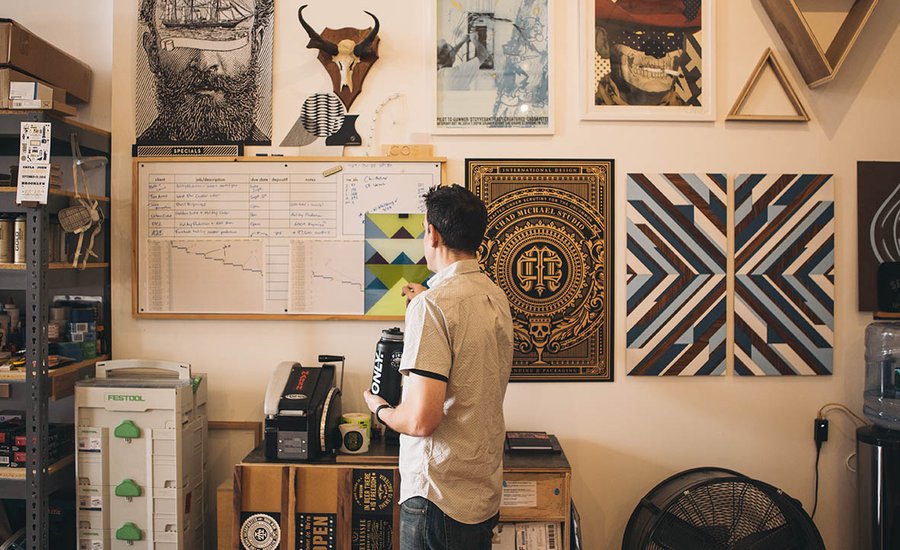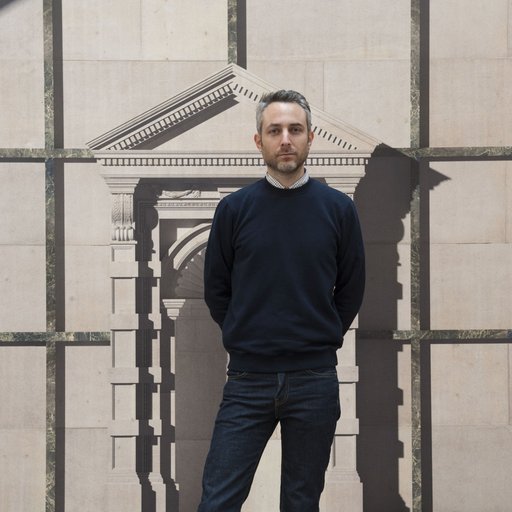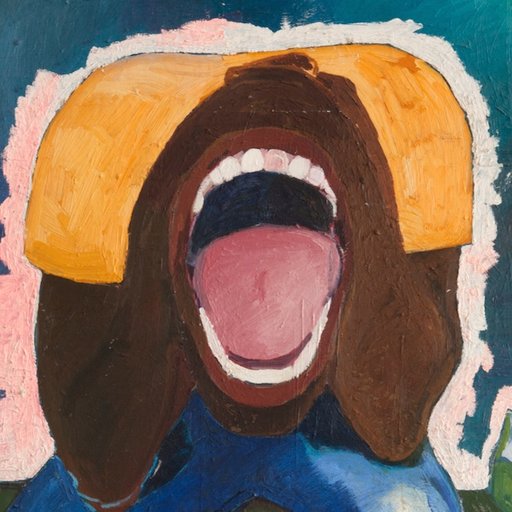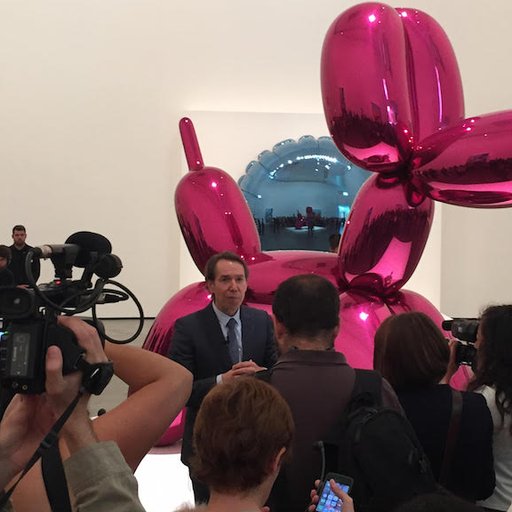The most intimate exchanges in the art world happen during studio visits. Curators, critics, dealers, and collectors get the opportunity to experience art in its native context, to see works in progress, and to speak with artists directly about their practice, while artists can expose their work to people who could help them with their careers and give them insightful feedback.
But the behind-closed-doors nature of the studio visit that makes these exchanges intimate and unique, also makes them difficult to master. Short of being an actual fly on the wall in someone else's studio, it's nearly impossible to know whether you're doing it right. Knowing how to conduct yourself might seem like common sense, but we've found that visitors are often surprised to find artists totally unprepared for their studio visits—usually at no fault of their own.
So what should you, as an artist, do to prepare for a studio visit? We’ve asked dealers, curators, advisors, collectors, and seasoned artists to provide some insider insight on what to do (and what not to do) during your next studio visit. Here’s what the experts had to say:
How to Talk About Your Work
This may seem obvious, but after talking to several curators, it’s apparently not… Expect to talk about your work and explain what you do. But how? Our experts had differing opinions on what they prefer in terms of tone, detail, and professionalism.
Tip #1: Actually Understand What Your Work Is About
“I hate when you ask an artist what their work is about and they have no idea—they're so caught off guard by that question. To be honest, this happens almost seven out of 10 times. If you sit in a room often eight hours a day making a thing, spend five minutes and ask yourself, ‘Why am I making this? And how do I communicate why this was worth making to someone other than myself, though words?’ Walk the visitor through your practice and do not assume they know everything you’ve ever done. Have examples of past work so they can understand how you got here. And again, explain why you are making that thing.” – Lauren Christiansen, independent curator based in New York
“A studio visit is the time for an artist to not only sell the work but to sell themselves. Collectors, curators, and dealers are there to learn about the concepts behind the work, so artists should be able to talk about them fluently. Specifically, speak to the motivations behind the creative process and how the work is made—this provides unique insights that one can't garner from looking at images on a website. The more an artist is willing to share, the better the dialogue.” – Megan Green, collector based in New York
“In terms of semantics, I would say that artists should “talk about” their work, rather than “explain” it—but yes, as an artist, you should plan on being able to talk about your work in an articulate manner. A studio visit can be a great time to get early feedback on the direction that a new work or series is taking.” – Marco Antonini, curator-at-large at NURTUREart in Brooklyn and independent writer
“I like when artists show works right away and get straight to the point! They shouldn’t necessarily expect questions, especially at the beginning of the studio visit.” – Domenico de Chirico, Milan-based independent curator and editor at Artviewer
Tip #2: But Don't Force It
“I think it's important for an artist to know they don't have to have an explanation for every decision they make—be it a drip here or a fuzzy ball attached there. BFAs and MFAs "professionalize" artists to a point where they often over-analyze their own work. Allow for quiet and space for the dealer, curator, or collector to simply look. They may come to the work with a whole different set of responses which could be helpful for growth in an artist's practice.” – Patton Hindle, co-owner of Yours Mine & Ours Gallery in New York, and director of gallery and institutional partnerships at Artspace
“I struggle with a studio visit when it’s too closed, when the artist is just giving you what comes off as a thesis, like a type of elevator pitch with no real entry-point into the conversation. I experience this most with people who just recently came out of undergraduate or masters programs and are used to defending a particular thesis rather than engaging in an open conversation that’s evolving. This conversational tone is a red flag; schools in the US have a particular way of speaking, phrasing, or contextualizing their work that’s fostered by a system where they’re paying someone to give them feedback.” – Tara Downs, owner of Tomorrow Gallery in New York
“While some of us are better than others at doing a sales pitch, artists are fundamentally not sales people. We are thinkers and makers. During studio visits, there is pressure to perform and impress that can sometimes distract or impede from a concise, honest flow of ideas. I want to talk about my approach to life, the larger framework. It's not only more stimulating, it will also create a context for better understanding the individual objects I've made. Everything is interrelated. Sometimes in life, the best way to have a conversation about philosophy is to ask a question about sports. Talk. We share a common purpose.” – Andrew Birk, Mexico City-based artist represented by Anonymous Gallery
How to Prepare for Your Studio Visit (Whether or Not it's Actually in Your Studio)
Studio visits don't necessarily involving visiting an actual studio. Coffee shops and Skype are, for many artists and curators we spoke with, common sites for discussion about an artist’s practice. But while most can agree on Skype, the jury is still out on whether providing your CV and press is an appropriate degree of professionalism. Oh, and nobody dislikes snacks.
Tip #3: Put Your CV Online, But Not in the Studio
“If you’ve received press, make sure it's available to read. Do the same with your CV. Your website should be up-to-date with not only images of your work, but information about your accomplishments.” – Sue Stoffel, collector based in New York
“Printing out CV and press? Dear god no, don’t do that. That is so over-professionalized and weird.” – Christiansen, independent curator
“That’s what Google search is for! Curators should already know the artist's CV.” – Tara Downs, Tomorrow Gallery
Tip #4/Tip # 5: Don't Be A Slob, and Feed Your Guests
"I always buy a couple of bottles of water—one for the visitor and another for me. I also try to clean the floor but I don’t repaint it because I think it’s good for the visitor to get into the space and feel the vibe of the work. That’s what’s special about a studio—it’s not as sterile as a gallery.” – Cristina de Miguel, New York-based artist represented by Freight + Volume
“I like to come into a clean studio with a few selected works on display, unless we are going to talk about process, which is also something I like. Drinks and snacks are always welcome.” – Antonini, NURTUREart
"I will have appropriately cleaned my space, will have food and beverages available, and most importantly, will have done all the research possible to understand my visitors as far as past efforts, where, why, and with whom." – Birk, artist
“Clean up! Make sure you have toilet paper in the bathroom and water bottles out for your guests. Even if it’s just Poland Springs and plastic cups—have something to offer. Have works already out on display. No one wants to watch an artist unwrap double-wrapped paintings leaned up against a wall, one after another. I once went to an artist’s studio and they had a huge canvas displayed on the floor. There wasn’t anywhere to sit or stand, so we just hovered in the doorway and it was very uncomfortable.” – Stoffel, collector
Tip #6: You Don't Need to Show Everything All at Once
"Figure out the order in which you'd like your work to be seen. Sometimes showing all your cards up front is not the best approach, but selectively bringing out work over the course of a visit can be more productive for the visitor and tell a clearer story." – Max Warsh, artist and co-director of Regina Rex Gallery in New York
Tip #6: You Don't Need a Studio to Have a Studio Visit
“The only time I’ve shown physical work was when I took a curator to my exhibition at Museo del Chopo. Otherwise, I usually go meet in different places. My last studio visit was at a cute organic coffee shop. I normally prepare a PDF to show, or just show them my website. I take the lead, give a presentation, click through my images, and wait to see if they have questions.” – Debora Delmar, artist represented by DUVE Berlin
“I do a lot of Skype visits. I prefer Skype visits because you can only talk. There are no environmental distractions. Like, we will not be talking about the puppy calendar in the corner.” – Christiansen, independent curator
“Remember, studio visits can happen at all levels. A studio visit could be having coffee and conversation with someone outside of the studio because artists are always at different points of production. Sometimes the studio is full, sometimes it’s empty, sometimes you’re Skyping with someone halfway around the world so you’re not actually seeing things. Multiple points of contacts are also really nice, in fact I find you can gain more because in the studio visit, it’s best to stop and think and take away from the conversation, and then return to it because more questions arise afterwards.” – Downs, Tommorrow Gallery
“Skype is good for both open dialogue and looking at works. When I Skype visit, I generally have already looked at the artist’s portfolio and updates, though sometimes the artist also brings their computer around in the studio so I can see it.” – Domenico de Chirico, independent curator
What Not to Do
Tip #7: Don't Be Greedy
"Don’t expect collectors to buy in the moment. That rarely happens. Usually they’ll want to think about it and get back to you. And here's the cardinal rule: there should always be transparency between the artist, the gallerist, and the collector. If the artist is represented by a gallery, the gallery should be notified that a deal is being made. If not, it's bad for everyone involved. The gallery could drop the artist, and the relationship between the collector and the gallery would be jeaprodized as well." – Stoffel, collector
“If the visitor seems interested in purchasing work, it can be a good time to cut a deal with patrons. But don't be overly aggressive. Buying directly from the studio is a special experience and can seem like a good deal for buyers. It's also nice to receive any sort of take-away like a sticker, multiple, book etc. to remember the visit. Collectors love collecting things!” – Green, collector
Tip #7: Don't Name Drop
“The most annoying thing in a studio visit is when someone name drops. Although, I do like it when they promote their less famous friends' work that they think I should see.” – Zach Feuer, owner of Feuer/Mesler Gallery in New York
Tip #8: Don't Assume Everybody Everywhere Wants to Visit Your Studio
“It’s not necessarily a faux pas to email a curator to ask for a studio visit without knowing them, but as an artist, I would make sure that my work and the ideas at play in my work resonate with the activities of the curator (exhibitions, writing, etc.) that I’m approaching. The best way to go is usually though an introduction, and if possible, a real one… e.g. an introduction made by a mutual friend who also truly believes there’s a possible good match.
"A “cold” approach will almost never work, if not for the awkwardness of it. Also, the idea that curators have the time to trek around the world for studio visits is a fantasy. We are overworked like everyone else is. In-person studio visits are rare and in my case are usually project-related, i.e. I’m already working on an idea and I want to see the work in person, which means I have already seen the work.
"I'd also like to plug this in because I think it's extremely important: as an artist, what you are doing in a studio visit is not trying to get work shown anywhere; rather, you are building a personal relationship/exchange that will facilitate that. Also, do not insist on getting a studio visit; you would be most likely be wasting your and your visitor's time." – Antonini, NURTUREart
OPTIONAL: Forget Everything You've Just Read
"Artists can do whatever they want. I think we should make sure that aritsts can be the way they want to be rather than formatting them to fit what we expect. Their way of communicating is making art." – Florence Derieux, curator of American art at Centre Pompidou Foundation and curator-at-large at Centre Pompidou
























